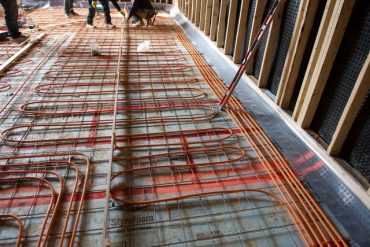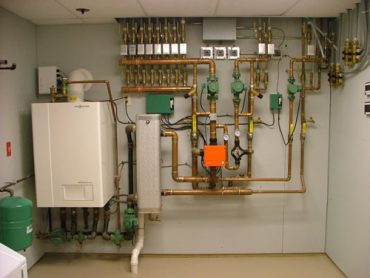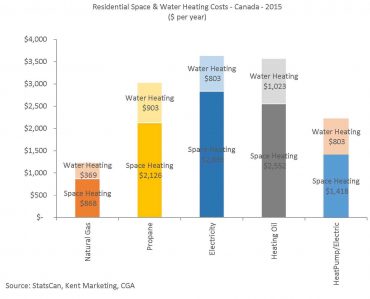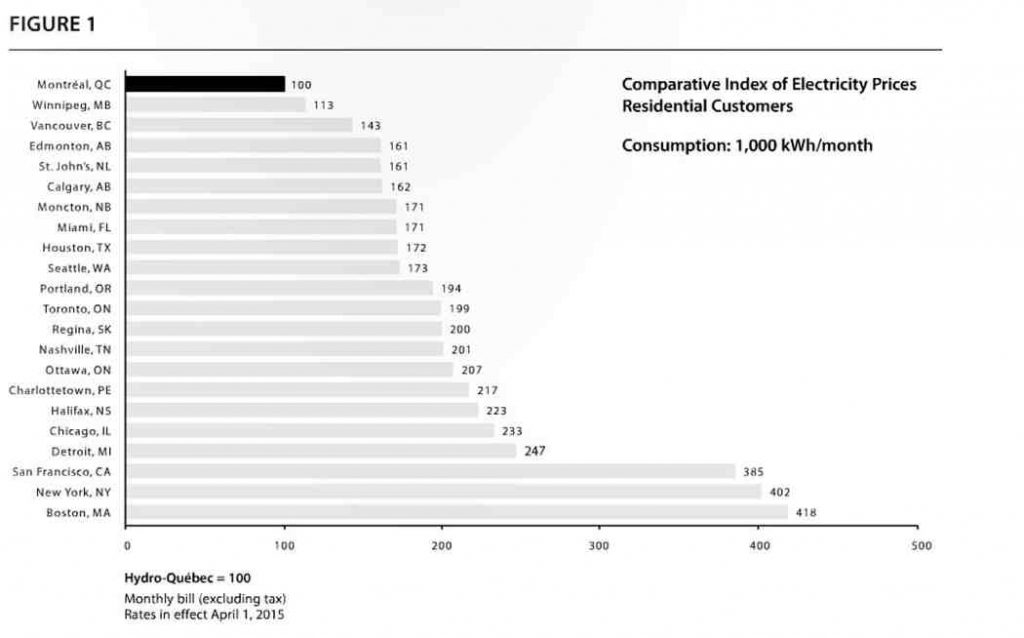
John Bleasby
Is radiant floor heating always the best choice?
Canadian ContractorReviews are positive but radiant may not be suitable for all homes
OK, so it’s really hot outside right now and it’s hard to think about heating systems. However, when the time comes to either build new or renovate, one of the questions likely to pop up from your client will be “Should we install radiant floor heating?”

Radiant floor tubing, installed over a new sub floor, insulated with foam board
Certainly radiant floor heating is popular. It operates silently, delivering a continuous, all-encompassing heat to every corner of the home with an efficiency that stop-and-start forced air systems cannot match. Some even claim radiant is as much as 25% more energy efficient than the standard HVAC system. And as a bonus for dust and allergy sufferers, radiant systems offer relief from air-born irritants.
However, radiant floor heating may not be suitable in all situations.
Good news for new-builds; not so good for renovators
The good news is that in a new-build home, the homeowner has a blank slate with which to work, and therefore the options are far greater than with a retrofit or renovation. However, unless the renovation is a near-total gut job and the customer is prepared to tear up the existing floor to install, even temporarily, a radiant floor system may be financially out of the question and structurally impractical.
Ductless and grill-less? Really?

Central control for a radiant heat system
Is your customer tired of unsightly bulkheads that hide duct-work, and the floor/baseboard grills associated with forced air? You need to tell them that some form of air movement system is required no matter what heating system is chosen. Given the high insulation values now required under building codes and the resultant ‘tightness’ of new and renovated homes, an HRV system is either mandated or highly recommended to maintain overall air quality and to reduce the risk of mold build up. Therefore ducts for air circulation will be required along with, albeit smaller, associated ventilation plates. Fortunately, these ducts can usually be hidden in walls and do not require wall or ceiling bulkheads.
However, until some clever inventor comes up with a floor system that can cool a house as well as heat it, present day ducted central air conditioners will remain popular. Yes, there are flush wall mounted air conditioners, mini-splits, and ceiling fans that control the temperature in rooms most affected by summer’s solar heat gain through windows, however costs for an effective whole-house system can get high depending on the choice.
Gas-fired hot water or electric?

Whether it’s radiant heat or forced air, natural gas delivers best value for heat or hot water
Operational costs and installation considerations must be taken into consideration. A gas-fired hot water radiant system is the oft-recommended option for whole-house heating. However, such systems are neither inexpensive to buy nor simple to install. Most systems require tubing to laid over the sub-floor and embedded in concrete. Bear in mind this raises the floor somewhat, a factor that should be taken into account at the design phase, although Ultra-thin floor panels boards pre-shaped to accept tubing and tube-ready subfloor sheeting products are also available, reducing the amount of floor rise. Also bear in mind that a hot water radiant heat system will be dependent on a sophisticated central boiler and control unit, usually located in the basement. This is a job for professional specialists.

Electricity cost vary greatly across Canada and the USA. Great if you’re in Quebec, not so great if you aren’t. (source: Hydro Quebec 2015)
How about electric floor heating? Certainly the products available on the market allow for much simpler installation, particularly in retrofit applications. A heated bathroom floor underfoot in the morning or an entrance hall that keeps footwear warm can be very popular. However, two notes of caution. First, the installation must be done professionally and properly. A Niagara Falls area contractor was fined over $530,000 for improper installation and failure to have an inspection performed on an electrical radiant floor heating system that resulted in second and third degree burns to an elderly homeowner after he was stranded on the floor after a fall.
Secondly, there are the operating costs of electric. Electrical costs vary across the country (Heaven help Ontario residents!) but suffice it to say that electricity is expensive, far more than natural gas on a net BTU basis. The result is that electric radiant systems are best confined to specific rooms and used in conjunction with timers in order to avoid wasted energy.
As always, discussing installation and operational considerations at the early stages is the best way to avoid disappointment and deliver the heating, cooling and ventilation best suited to your client. It could turn out that the recent advances in traditional forced air heating systems, like high efficiency burners and multi-speed brushless fan motors, are just what the doctor ordered after all.
follow John on Twitter @john_bleasby
Advertisement
Print this page
1 Comment » for Is radiant floor heating always the best choice?
1 Pings/Trackbacks for "Is radiant floor heating always the best choice?"
-
[…] Can heat the floor in a radiant floor heating system. […]

I have just installed by a contractor radiant heat , heating cable. in my bathroom the product is stelpro. I have my thermostat set at 80 deg f, the best temp I can get is 68 to 70 deg f. is this normal, I live in Ontario Canada